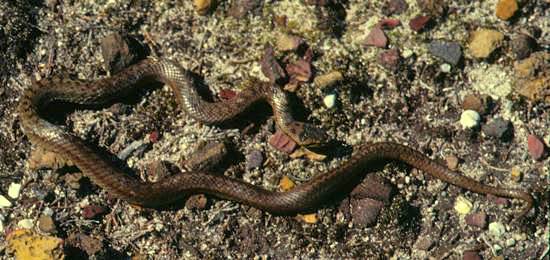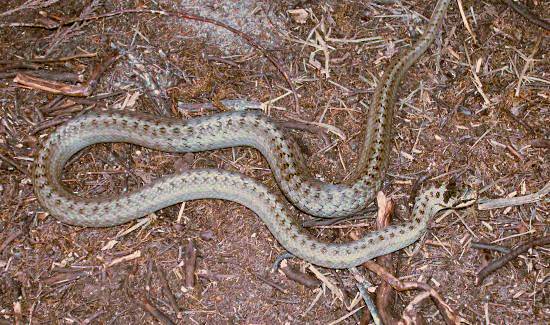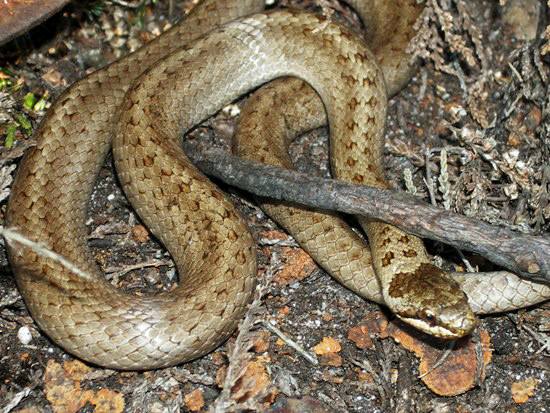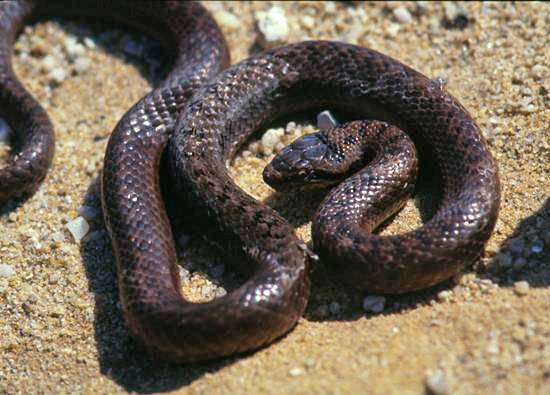Coronella austriaca - Smooth Snake
Phylum: Chordata - Class: Reptilia - Order: Squamata - Family: Colubridae
Identification - Distribution - Lifecycle - Food - Predators - Reference Sources

The rarest of the three snakes native to Britain, the Smooth Snake is now seldom seen in UK.

Identification
Smooth Snakes are grey or brown with two rows of darkish spots on their backs, and they have flat scales (Grass Snakes and Adders have keel-like ridges down the centre of each scale) - hence the common name. Smooth Snakes are very slim creatures compared with Adders or Grass Snakes of the same length. The adult males can grow to a length of 60cm, while females are slightly larger and have been known to attain a length of 68cm in Britain. The eye of a Smooth Snake has a distinctive round golden iris, while the head, which bears a darker brown or almost black crown, has dark brown eye stripes

Distribution
In Britain this species is mainly restricted to a few lowland heath sites in the south of England. Loss of suitable heathland habitat is generally believed to be the main factor responsible for the decline in Smooth Snake numbers.
Lifecycle
In common with our other reptiles, the Smooth Snake hybernates during the winter months. Like most of the reptiles native to Britain, Smooth Snakes are effectively viviparous with eggs hatching inside the body of the female, and they are reported to produce up to 15 young which at birth are about 15cm long and have distinctive black tops to their heads.

Food
Smooth Snakes eat lizards and small rodents, killing their prey by constriction.
The Wildlife and Countryside Act provides very strict protection for this snake, which in Britain is considered to be threatened with extinction. If you come across a smooth snake you are not allowed to handle or even disturb it.
Predators
Smooth Snakes are sometimes killed by people in the mistaken belief that they are adders. These reptiles are neither venomous nor aggressive, and so killing any of them is quite unjustified; indeed to do so in the UK is a criminal offence under the Wildlife and Countryside Act of 1981.
Reference Sources
Matching the Hatch by Pat O'Reilly (2017) - learn all about aquatic insects and other small water creatures that feature in the diet of reptiles.
Acknowledgements
This page includes pictures kindly contributed by Simon Harding and Bob Osborne.
Please Help Us: If you have found this information interesting and useful, please consider helping to keep First Nature online by making a small donation towards the web hosting and internet costs.
Any donations over and above the essential running costs will help support the conservation work of Plantlife, the Rivers Trust and charitable botanic gardens - as do author royalties and publisher proceeds from books by Pat and Sue.

